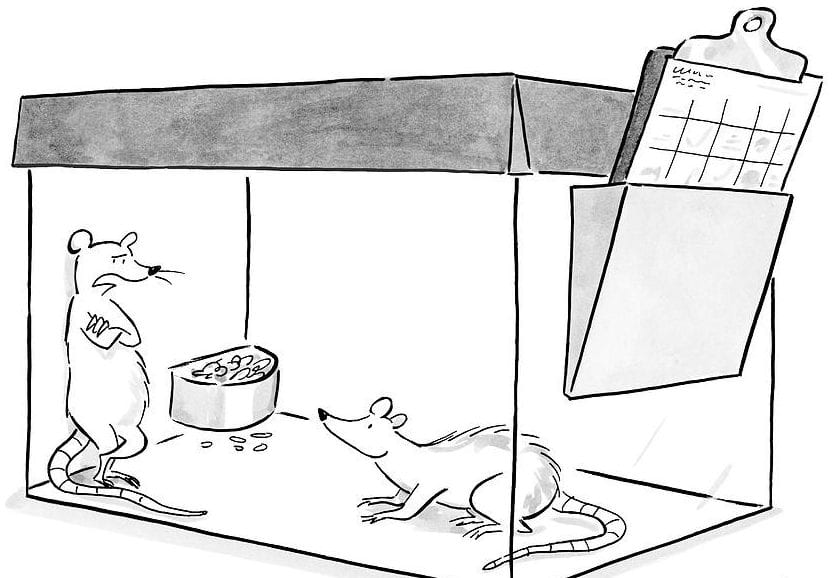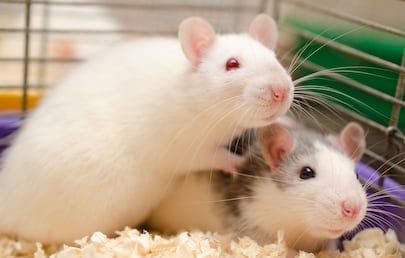 Research animals must be housed under conditions that ensure their physiologic and behavioral needs are met. These conditions influence animal well-being and the quality of data obtained throughout a study. Facilities are often designed with many of these factors in mind, including temperature and humidity control, lighting, noise and vibration. However, there are other factors that should be considered prior to the onset of a study, including whether animals are housed together or in isolation. Certain techniques, such as telemeter implantation, can require normally social animals to be housed individually to prevent signal interference between telemeters. This can influence animal well-being, and in some cases, data pertaining to physiological parameters. Some systems, including Kaha Sciences Telemetry and Indus Instruments Small Animal Telemetry have been designed to overcome these challenges by enabling cohousing. Understanding the benefits of cohousing and the risks associated with individual housing can aid in the selection of a telemetry system.
Research animals must be housed under conditions that ensure their physiologic and behavioral needs are met. These conditions influence animal well-being and the quality of data obtained throughout a study. Facilities are often designed with many of these factors in mind, including temperature and humidity control, lighting, noise and vibration. However, there are other factors that should be considered prior to the onset of a study, including whether animals are housed together or in isolation. Certain techniques, such as telemeter implantation, can require normally social animals to be housed individually to prevent signal interference between telemeters. This can influence animal well-being, and in some cases, data pertaining to physiological parameters. Some systems, including Kaha Sciences Telemetry and Indus Instruments Small Animal Telemetry have been designed to overcome these challenges by enabling cohousing. Understanding the benefits of cohousing and the risks associated with individual housing can aid in the selection of a telemetry system.
There is an abundance of literature demonstrating the disadvantages of individually housing certain species. Individually housing male mice has been shown to influence glucocorticoid (stress hormone) and immune responses 1. Compared to group housed animals, individually housed mice exposed to mild stress demonstrate elevated basal corticosterone, lower interleukin-2 and interleukin-4 (cytokine signaling molecules) and splenocytes proliferation 1. Individual housing has also been associated with altered food consumption2, increased irritability 3, and altered drug metabolism 4. In addition to influencing animal well-being, changes in food consumption and drug metabolism can significantly influence research outcomes. As such, cohousing is an important consideration.
Cohousing recommendations for individual species are based, in part, on behavioral characteristics such as the desire to nest near a cage mate. In a study of male mice, animals given the choice to nest in an inhabited or empty cage preferred the proximity of another animal 5. This preference was maintained regardless of whether the animal was dominant or subordinate. These results led the authors to conclude that individual housing, even as a strategy to overcome aggression, was not ideal for animal well-being5. In another study, mice were given access to food, a running wheel, enrichments and another mouse- provided they were willing to traverse shallow water to access them 6. Animals “worked” to access each resource multiple times each day and did not stop visiting the other mouse. These findings led authors to conclude that the mice valued companionship.
These studies represent a small sample of the literature pertaining to animal preference for a cage mate. Selecting a telemetry system with the ability to cohouse rodents offers several advantages for animal well-being and ensures accurate data. There are multiple publications that report successful cohousing during telemetry studies. Briefly, in a 2017 study of circadian rhythm and kidney oxygenation, Sprague-Dawley rats were implanted with oxygen sensing telemeters and cohoused to ensure normal physiological activity and welfare were maintained 7. In an earlier study (2014), rats were surgically implanted with blood pressure telemeters, with the sensor inserted into the abdominal aorta, and housed in pairs 7.
When embarking upon telemetry research, cohousing is an important consideration. For rodents that value companionship, it is worthwhile to consider telemetry systems that enable cohousing without sacrificing data acquisition.
To discuss our telemetry options contact us or give us a call 519 914 5495
References:
Bartolomucci, A. et al. Individual housing induces altered immuno-endocrine responses to psychological stress in male mice. Psychoneuroendocrinology 28, 540–58 (2003).
- Prychodko, W. Effect of Aggretation of Laboratory Mice (Mus Musculus) on Food Intake at Different Temperatures. Ecology 39, 500–503 (1958).
- ML, R. et al. Impoverished rearing conditions increase stress-induced irritability in mice. Dev Psychoviol 19, 105–11 (1986).
- Zetler, G. & Baumann, G. H. Pharmacokinetics and effects of haloperidol in the isolated mouse. Pharmacology 31, 318–27 (1985).
- Van Loo, P., de Groot, A., Van Zutphen, B. & Baumans, V. Do Male Mice Prefer or Avoid Each Other’s Company? Influence of Hierarchy, Kinship, and Familiarity. J Appl Anim Welf Sci 4, 91–103 (2001).
- Sherwin, C. M. Laboratory mice persist in gaining access to resources: a method of assessing the importance of environmental features. Applied Animal Behaviour Science 48, (1996).
- Emans, T. W., Janssen, B. J., Joles, J. A. & Paul Krediet, C. T. Circadian rhythm in kidney tissue oxygenation in the rat. Front. Physiol. 8, 1–7 (2017).
Keywords: mouse, mice, rat, rats, rodents, rodent, small animal, small animals, wireless telemetry, implantable telemetry, telemetry options
